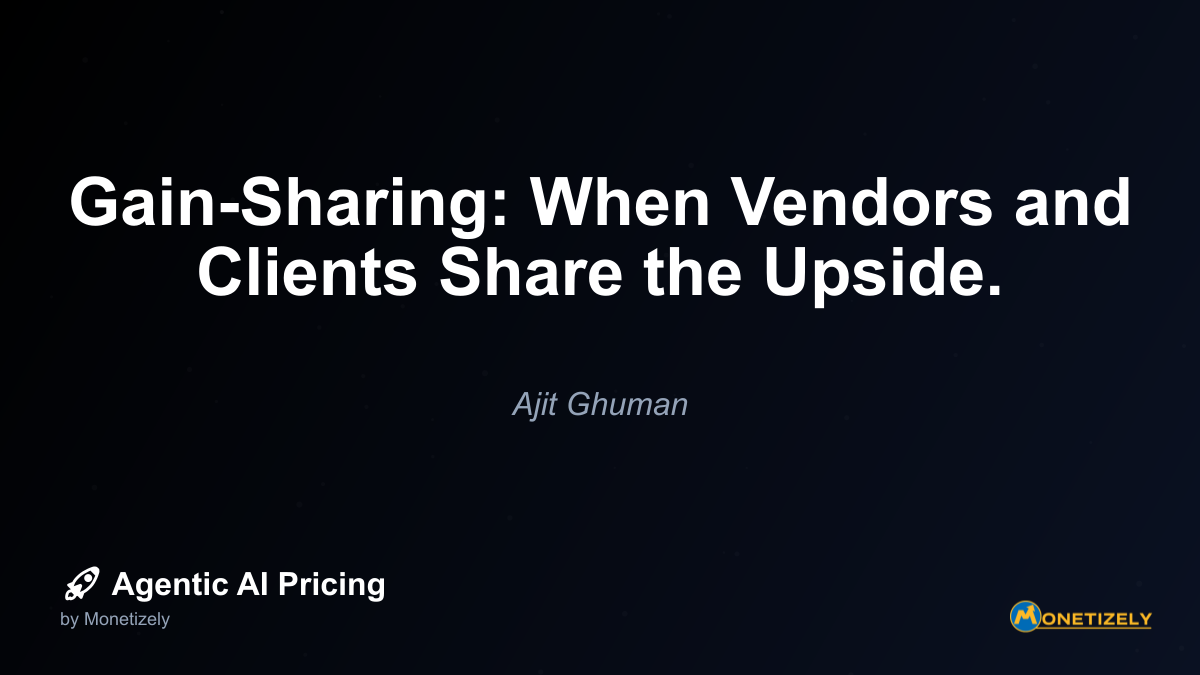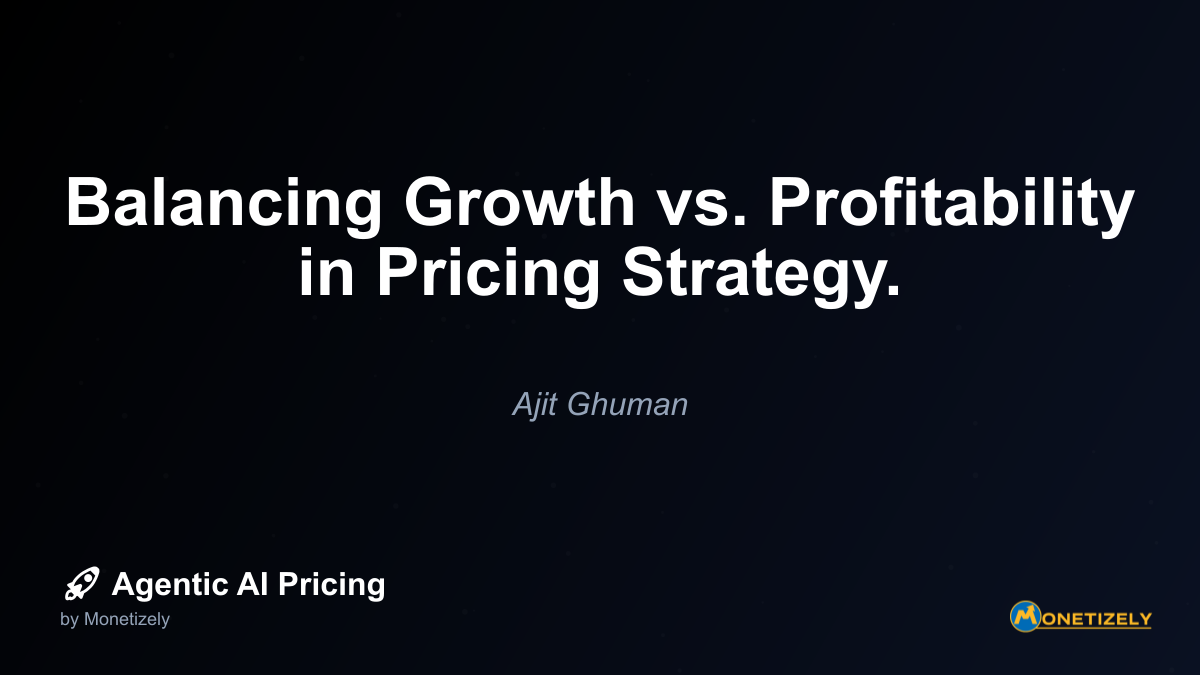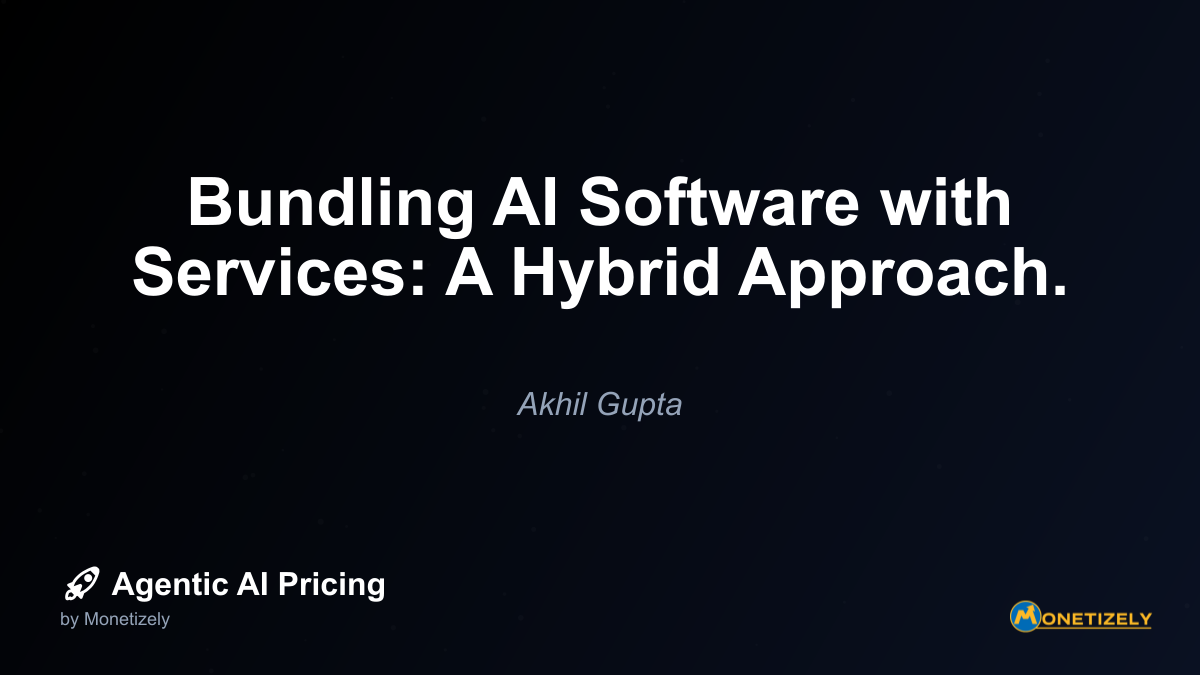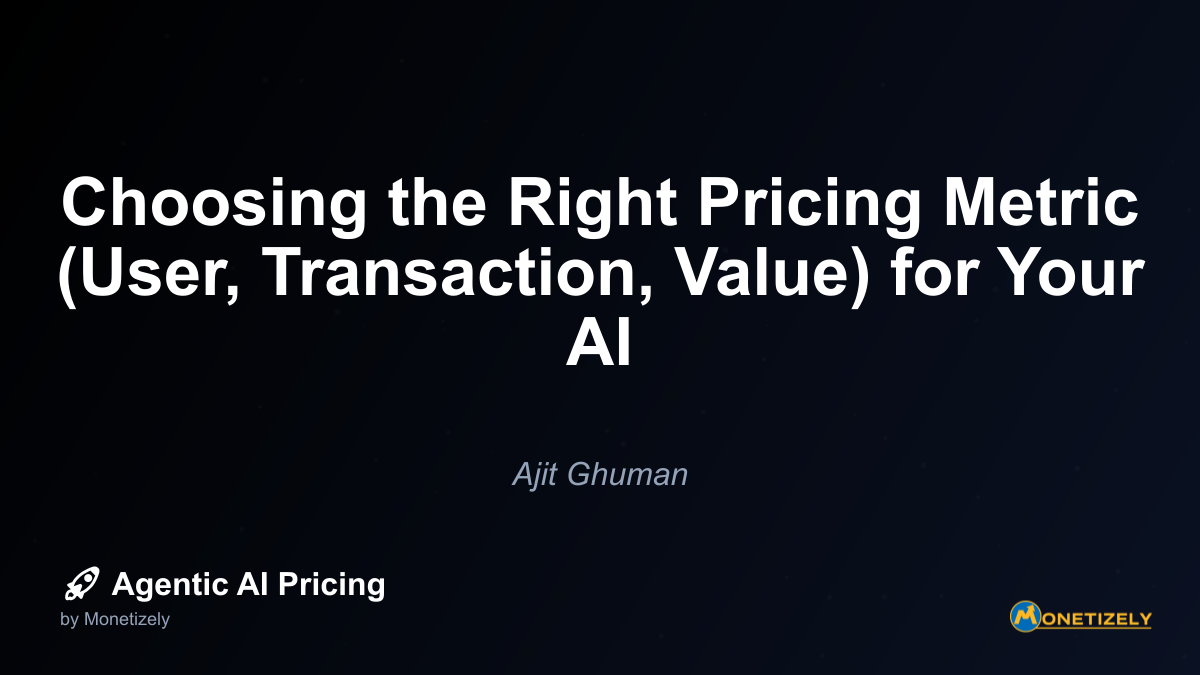· Ajit Ghuman · Strategy & Planning · 6 min read
Gain-Sharing: When Vendors and Clients Share the Upside.
AI and SaaS Pricing Masterclass
Learn the art of strategic pricing directly from industry experts. Our comprehensive course provides frameworks and methodologies for optimizing your pricing strategy in the evolving AI landscape. Earn a professional certification that can be imported directly to your LinkedIn profile.

Building Trust and Transparency: The Foundation of Success
Gain-sharing arrangements can’t succeed without a foundation of trust and transparency between vendor and client. This requires intentional processes and systems:
Client-Side Transparency Requirements
For clients to trust gain-sharing arrangements, vendors must provide:
- Algorithm Transparency: Clear documentation of how the AI system makes decisions
- Performance Reporting: Regular, detailed reporting on key metrics
- Audit Rights: Client ability to verify calculations and examine data
- Knowledge Transfer: Education on how to interpret and act on AI insights
Vendor-Side Transparency Requirements
Similarly, vendors need transparent access to:
- Business Context: Understanding of client operations and challenges
- Data Access: Sufficient information to train and improve AI systems
- Feedback Loops: Regular input on performance and pain points
- Strategic Alignment: Insight into client’s long-term objectives
Governance Structure
Successful gain-sharing arrangements typically establish formal governance mechanisms:
- Joint Steering Committee: Regular meetings between senior stakeholders
- Technical Working Group: Operational teams addressing day-to-day issues
- Escalation Protocols: Defined processes for resolving disagreements
- Amendment Procedures: Clear methods for modifying the arrangement as needed
Communication Cadence
Regular communication at multiple organizational levels reinforces trust:
- Executive Reviews: Quarterly strategic alignment sessions
- Management Updates: Monthly performance reviews
- Operational Check-ins: Weekly tactical discussions
- Real-time Alerts: Immediate notification of significant deviations
Potential Challenges and How to Address Them
While gain-sharing offers compelling benefits, these arrangements face several common challenges that must be proactively addressed:
Challenge 1: Attribution Disputes
As business environments change, determining what portion of improvement stems from the AI solution versus other factors becomes increasingly difficult.
Solution: Implement a formal attribution methodology that:
- Uses control groups where possible
- Incorporates agreed-upon adjustment factors
- Includes third-party validation for major calculations
- Provides for binding arbitration if disputes arise
Challenge 2: Changing Business Conditions
Market disruptions, competitive shifts, or regulatory changes can render original baselines irrelevant.
Solution: Build in formal baseline review processes that:
- Occur at predetermined intervals (typically annually)
- Include specific triggering events for off-cycle reviews
- Provide methodologies for adjusting to significant business changes
- Allow either party to initiate a review when conditions warrant
Challenge 3: Data Availability and Quality
Measurement depends on consistent, high-quality data, which may deteriorate over time.
Solution: Establish data governance mechanisms that:
- Define minimum data quality standards
- Include regular data quality audits
- Specify remediation processes for data gaps
- Provide alternative measurement approaches when primary data is unavailable
Challenge 4: Misaligned Incentives
Without careful structure, gain-sharing can create unintended consequences or perverse incentives.
Solution: Design holistic measurement frameworks that:
- Balance multiple metrics to prevent optimization of one at others’ expense
- Include quality and customer satisfaction measures alongside efficiency
- Incorporate both short and long-term performance indicators
- Feature regular review of incentive effects
Challenge 5: Cash Flow Timing
Vendors may struggle with delayed compensation while clients may resist paying before value is fully realized.
Solution: Create balanced payment structures that:
- Include minimum payments to cover vendor operating costs
- Provide milestone-based advances against future gain-share
- Establish escrow mechanisms for disputed amounts
- Allow for reconciliation and true-up processes
Real-World Success Patterns: Learn from the Leaders
Organizations successfully implementing gain-sharing typically follow several common patterns:
Start Small, Then Expand
Rather than attempting enterprise-wide gain-sharing immediately, successful implementations typically:
- Begin with a clearly defined pilot area
- Select functions with straightforward measurement
- Establish proof points before expanding
- Use initial success to refine the approach
Hybrid Financial Models
The most resilient arrangements typically employ hybrid models that:
- Include a base component covering vendor costs
- Add variable compensation tied to performance
- Feature caps to limit extreme outcomes in either direction
- Adjust the fixed/variable mix as the relationship matures
Relationship-First Approach
Successful gain-sharing prioritizes relationship building through:
- Joint solution development rather than vendor-imposed approaches
- Shared risk through mutual investment
- Executive sponsorship and regular leadership engagement
- Emphasis on long-term partnership over short-term gains
Continuous Improvement Focus
Rather than static arrangements, effective gain-sharing incorporates:
- Regular model refinement based on performance data
- Ongoing baseline adjustments as conditions change
- Expanding scope as trust and results build
- Evolution of measurement methodologies
For example, successful AI startups have found that outcome-based pricing models can create powerful differentiation when entering competitive markets, particularly when they can demonstrate confidence by putting compensation at risk.
When to Avoid Gain-Sharing Arrangements
Despite their benefits, gain-sharing isn’t appropriate for all situations. These arrangements should be approached cautiously when:
Attribution Is Fundamentally Problematic
Some business contexts make reliable attribution nearly impossible:
- Environments with numerous simultaneous change initiatives
- Businesses undergoing major restructuring
- Markets experiencing extreme disruption
- Functions with limited performance data
Trust Foundation Is Insufficient
Gain-sharing requires mutual trust, which may be lacking when:
- Parties have no prior working relationship
- Cultural misalignment exists between organizations
- Previous collaboration has been problematic
- Significant stakeholder skepticism exists
Business Stability Is Low
Highly volatile environments complicate gain-sharing:
- Startups with rapidly evolving business models
- Companies in the midst of merger/acquisition activity
- Businesses facing existential competitive threats
- Organizations undergoing leadership transitions
Time Horizons Are Mismatched
When value realization and payment timing cannot be aligned:
- Vendors requiring immediate revenue recognition
- Clients with extremely long ROI evaluation periods
- Projects where benefits accrue gradually over many years
- Solutions where value comes primarily from avoided future costs
In such cases, more traditional pricing models—or carefully structured hybrid approaches—may be more appropriate.
Implementing Your First Gain-Sharing Arrangement: A Roadmap
For organizations considering gain-sharing for the first time, this phased implementation approach can maximize success probability:
Phase 1: Foundation Building (1-2 Months)
- Conduct internal readiness assessment
- Identify potential pilot areas with clear measurement
- Establish executive sponsorship
- Develop preliminary baseline data
- Define success criteria for the arrangement itself
Phase 2: Partner Selection (2-3 Months)
- Create gain-sharing-specific vendor evaluation criteria
- Assess vendor willingness and capability for outcome-based models
- Evaluate vendor financial stability for delayed compensation
- Conduct reference checks with other gain-sharing clients
- Establish relationship and trust foundation
Phase 3: Deal Structuring (1-2 Months)
- Finalize baseline measurements
- Define detailed calculation methodologies
- Establish governance and communication frameworks
- Create dispute resolution mechanisms
- Document the complete arrangement
Phase 4: Implementation (Ongoing)
- Launch with clear communication to all stakeholders
- Conduct regular performance reviews
- Refine measurement approaches as needed
- Document lessons learned
- Prepare for expansion to other areas
Throughout this process, maintain focus on the fundamental goal: creating a win-win arrangement where both parties are incentivized to maximize value creation.
Conclusion: The Future of Vendor-Client Relationships
Gain-sharing represents more than just an alternative pricing model—it signals a fundamental shift in how vendors and clients work together in the AI era. As agentic AI systems become increasingly capable of delivering measurable business value, the traditional vendor-client dynamic is evolving toward true partnership.
The most successful organizations recognize that gain-sharing is ultimately about alignment. When vendors and clients share both risk and reward, their incentives naturally converge around maximizing real-world impact. This alignment creates a virtuous cycle where:
- Vendors focus on genuine client outcomes rather than feature development
- Clients actively engage in implementation success rather than post-purchase disengagement
- Both parties invest in continuous improvement rather than static deliverables
- Long-term relationships replace transactional interactions
For executives considering gain-sharing, the key questions are not just financial but strategic: Are you seeking vendors who will truly invest in your success? Are you willing to share the upside in exchange for reduced downside risk? Do you value partnerships over transactions?
In the rapidly evolving agentic AI landscape, the organizations that thrive will be those that build genuine partnerships based on shared success. Gain-sharing provides the financial framework for these relationships, but the true foundation must be mutual trust, transparent communication, and aligned objectives.
By carefully designing gain-sharing arrangements that reflect these principles, forward-thinking organizations can transform vendor relationships from necessary costs into strategic assets that drive competitive advantage in the AI-powered future.
Co-Founder & CEO
Ajit is the author of Price To Scale, a top book on SaaS Pricing and is the Founder of Monetizely. Ajit has led and worked in pricing and product marketing at firms like Twilio, Narvar and Medallia. His work has been featured in Forbes and VentureBeat. Ajit regularly consults with software companies from Seed stage to post-IPO on pricing strategy. Ajit is also a highly-rated co-instructor for 'The Art of SaaS Pricing and Monetization' on Maven.
Pricing Strategy Audit
Let our experts analyze your current pricing strategy and identify opportunities for improvement. Our data-driven assessment will help you unlock untapped revenue potential and optimize your AI pricing approach.




